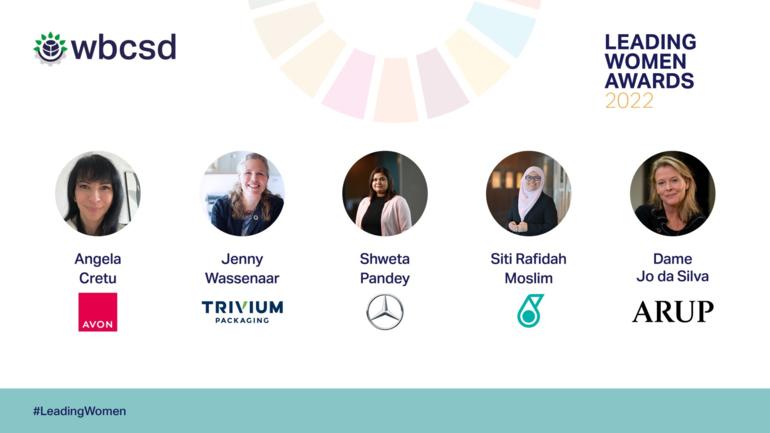If our sustainability ambitions are grounded in our achievements, we’ll be left with nothing to measure. Brendan Edgerton, Director of Circular Economy at the World Business Council for Sustainable Development (WBCSD) argues for companies to be bolder in their target setting by looking to their sustainability goals as a baseline rather than to their past to avoid being stuck.
Last year’s IPCC special report indicated that the planet is approximately 1.0°C warmer than pre-industrial levels and will likely reach 1.5°C as soon as 2030. Weeks ago, the UN published the IPBES Global Assessment stated that extinction rates are accelerating and up to one million species are threatened with extinction. Both reports implored that anything less than “transformational change” is insufficient in redirecting our collision course with environmental catastrophe.
As Sir David Attenborough stated in WWF and Netflix’s recent film Our Planet: Our Business, “what we do in the next 10 years will profoundly impact the next few thousand years”.
Moving forward while only looking back
Status quo bias happens to all of us. It occurs when an individual allows their preference for today’s state to affect their decision-making by discrediting reasonable alternatives. In other words, it’s human’s inherent bias against change.
The status quo is how we see, do and understand things today. It’s observed in society, government and business. It can be as complex as navigating social structure or as simple as measuring success.
The way we do business is also prone to this bias. Business has maintained the same perspective of how we measure progress for a while: how much better are we today than yesterday? For instance, companies track financial performance over time with KPIs like year-over-year sales growth. Similarly, they typically look at greenhouse gas emissions and waste generation and compare environmental performance with years past to set targets. Without significant changes in assets or strategy, a company may expect annual improvement (positive or negative) in the magnitude of these metrics to be 0-5%.
These metrics provide insight into progress being made or inform decision-makers that a new strategy may be needed. They provide a good frame for assessing where that company has come from.
However, there is an inherent danger in a company measuring its success against yesterday.
Backward-looking metrics without ambitious, forward-looking targets commensurate with the scale of change required may give leadership a false sense of doing enough.
Companies have been successful in achieving incremental progress in greenhouse gas emissions reductions, waste to landfill and other priorities for years, some decades. Incremental change, as referred to here, is a relative change of 5% or less compared to the previous year. It implies that this annual improvement is not tied to a forward-looking target that is consistent with the science, both in terms of methodology and urgency of the issue.
However, as the IPCC and IPBES reports highlight, these efforts fall woefully short of where we need to be. We’re on the right track. However, we’re moving at a pace far too slow to keep up with the environmental impacts of our activities.
We cannot convince ourselves that continued incremental progress will allow society to achieve the SDGs, the Paris Agreement targets or a world in which more than nine billion people live well within the planetary boundaries.
It’s too late for incremental change
We’re currently chasing a Tesla going 150 mph in a golf cart cruising at 15 mph, convincing ourselves we have a chance with persistence. Every day we maintain the status quo we fall further behind, further magnifying the insurmountable tasks of mitigating climate change, preventing further mass extinction or generating hectares of oceans waste.
To illustrate the consequences of continued complacency with incremental improvement, here are a couple of “back of the envelope calculations” on carbon emissions and the circularity gap:
- The latest IPCC report stated that society must stay under a carbon budget of 420 Gt CO2 between 2018-2050. Assuming 42 Gt CO2 emissions globally in 2018 (amount in 2017), we would need to reduce global emissions by 9.7% annually to keep temperatures below 1.5°C. Even with a 5% annual reduction in global emissions, we would still be emitting nearly 10 times the amount of carbon emissions as the 9.7% reduction in 2050 (15.8 versus 1.6 Gt CO2/yr). Yielding to only 1% improvement would almost ensure global temperature rise of at least 2°C.
- The world today is only 9% circular by one estimate. Assuming this percentage held true until next year, a government or company setting an ambition to be 100% circular by 2050 would need to improve its circularity by 8.4% annually for the next 30 years to meet that target. Even a strong incremental improvement of 5% annually only achieves a society that is 39% circular in 2050. Even countries hailed as pioneers, like the Netherlands, must drastically transform its economy to achieve its goal of making a circular economy a reality by 2050.
These examples highlight that annual improvement targets needed to drive transformation must be closer in magnitude to 10% than 3-5%. When reflecting on how a company or government may achieve 10% improvement in anything year-over-year, squeezing efficiencies and tweaking processes is not the solution.
The organization must transform what it does and how it does it to achieve the step change needed.
Setting a Transformational Ambition
“Doing less bad” and complacent incrementalism will not give us the world we hope for by 2030 or 2050.
With this in mind, when reevaluating your company’s sustainability targets and strategy, consider the following to ensure your company is not only breaking free from the status quo but also part of the solution:
- Use the end-state as the baseline: After identifying the material sustainability issues to your company, adopt aggressive goals based on the change that’s needed tomorrow as opposed to what’s possible today. The Sustainable Development Goals serve as a great framework to evaluate your sustainability targets, including 169 targets and timeline through 2030.
- Adopt science-based targets: Wherever possible, base targets upon and in-line with the scale that science calls for. The Science Based Targets initiative is a leading example of how companies can apply this thinking in the context of greenhouse gas emissions.
- Backcast to present: Establish short-term and mid-term goals that lead your company towards the baseline end-state. Accounting for anticipated technological advancements, demographic shifts and changes to the business, determine whether the improvements over time should be linear, exponential or step changes.
This may make you and your company, government or organization uncomfortable. It should. If it doesn’t, your ambitions are probably insufficient.
However, an organization may find that committing to ambitious sustainability targets drives innovation and employee engagement. In these times of heightened consumer awareness, increased transparency and investor sophistication on ESG issues, taking an approach like this will not only ensure you’re contributing to the solution but also futureproofing your success.
The circular economy is one tool that an organization can use to rethink its activities and how it can effectively decouple economic development from resource consumption and its associated environmental impacts and dependencies. It’s not easy to transform your organization, but that’s where true leadership is needed.
Necessity is the mother of invention. Let’s not delay in taking the needed steps today because tomorrow’s necessity is greater than today’s










